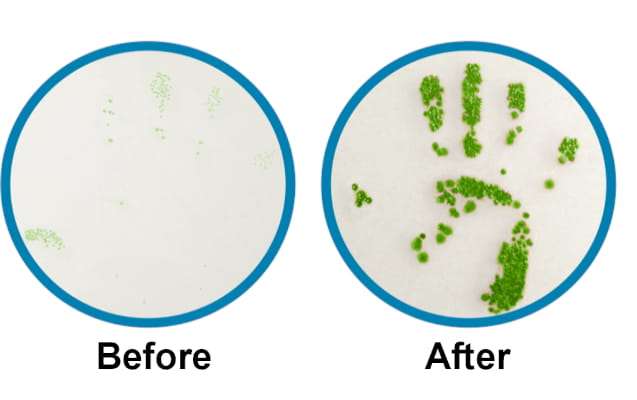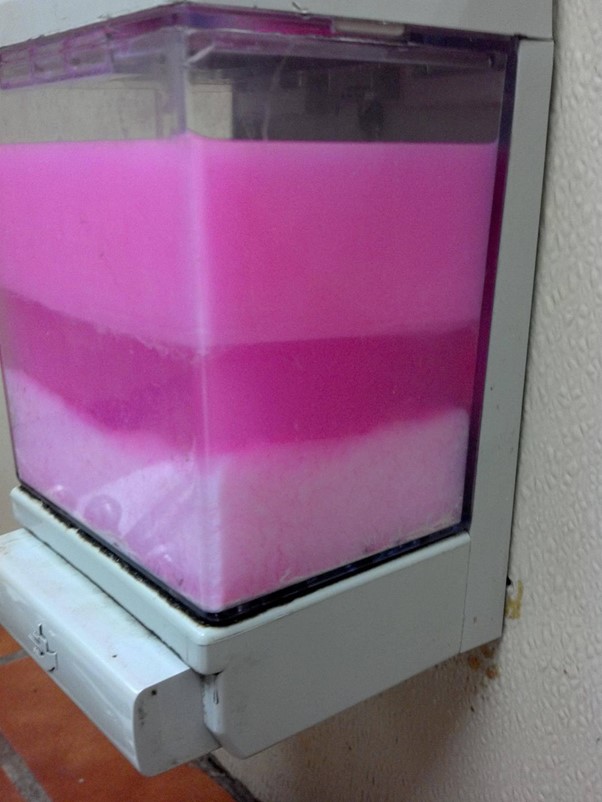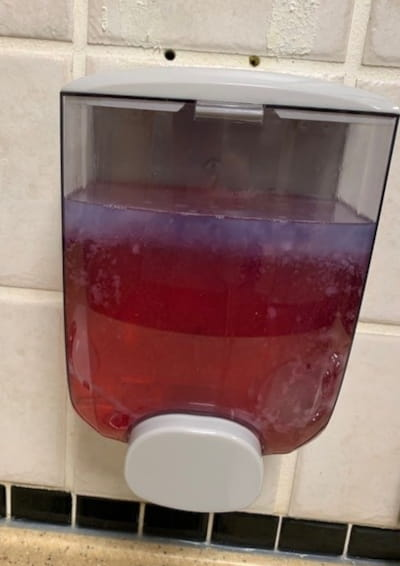Wednesday 6th August 2025
Are Your Soap Dispensers Making Your Hands Dirtier?
If you're responsible for maintaining clean, hygienic washrooms, you'd probably assume that soap dispensers are helping you do just that. But if you're still using open refillable soap dispensers — the kind you top up manually with bulk liquid soap — there’s a high chance they’re doing the opposite.
These systems are widely used and often seen as a cheaper option, especially in public washrooms. But what many people don’t realise is that this style of dispenser carries serious hygiene risks, can be time-consuming to maintain, and may even harm your reputation with visitors or staff.
Let’s unpack why it’s time to rethink them.
The Contamination Problem
It might seem counterintuitive, but in some cases, using soap from a refillable dispenser can actually increase the number of germs on your hands.
Unlike sealed cartridge systems that are replaced entirely, bulk refill dispensers are topped up through an opening in the lid — usually with a large bottle of liquid soap. Every time this happens, germs from the environment, unwashed hands, or even airborne particles can enter the container. And since these dispensers retain the same internal reservoir and nozzle for years, it creates an ideal environment for bacteria to grow.
Despite their long-standing use, this design has some fundamental flaws. Cross-contamination is easy, especially when people mix soap products or top up without cleaning out the dispenser properly.
Even antibacterial soap isn’t safe. Once a dispenser is contaminated, the bacteria thrive — and when users push the pump, they’re dosing their hands with germs.

🧪 A 2011 study found that 1 in 4 bulk refill dispensers contained dangerously high levels of bacteria. In fact, washing with this soap sometimes resulted in 25 times more germs on the hands after washing than before. 1
Warnings from Health Authorities
Refillable soap systems have come under scrutiny for years. Health organisations including the CDC2 and WHO3 have published clear warnings against the practice of “topping off” dispensers, noting that it increases the risk of bacterial contamination.
As a result, these dispensers are no longer used in healthcare settings — where hand hygiene is non-negotiable. Yet, in other sectors like education, leisure, or retail, they’re still widely in use, often without awareness of the risk.
How Do Dispensers Become Contaminated?
Every time a dispenser is opened for a refill, it invites contamination. This can come from:
- Hands that haven't been washed after cleaning toilets or bins
- Germs circulating in the air from flushing or coughing
- Dust, insects, or fragments from packaging
- Diluting soap with water (a common but dangerous cost-saving habit)
Add to this the fact that dispensers often go long periods without deep cleaning, and it’s easy to see how bacteria can take hold.
Topping up with different soap types can also cause compatibility issues. When preservatives in two formulas react with one another, the result is often chemical instability, reduced effectiveness, or visible separation where the soap splits into layers. That’s not just a hygiene risk, it looks unprofessional and can trigger complaints.
There's also the risk of intentional tampering. In schools, for example, open-top dispensers can become targets for vandalism, with students deliberately contaminating the soap or damaging the units altogether.

What Makes Biofilms So Dangerous?
One of the most serious, and invisible, threats inside refillable dispensers is the development of biofilms. These are clusters of bacteria that attach to damp surfaces and become extremely difficult to remove.
Once a biofilm forms inside a soap reservoir or nozzle, it acts like a contamination factory. Even if you flush the unit or soak it in bleach, the bacteria often survive. They repopulate quickly, meaning the dispenser is never truly clean unless it’s fully replaced.4
And this can happen in any material — whether the unit is made of plastic, metal, or mounted to the wall or counter.
🧼 Important note: Once biofilm is present inside a soap dispenser, the only way to fully eliminate it is to replace the entire unit. Any amount of cleaning and soaking in bleach wont do anything as biofilms are highly resistant.
The Maintenance Burden Nobody Talks About
Refillable soap dispensers might seem like a budget-friendly option at first. But keeping them clean and safe can quickly turn into a time-consuming job.
To stay safe, they should be cleaned thoroughly and regularly. This includes soaking the nozzles, flushing the reservoirs, and sanitising the surfaces. But in fast paced facilities such as schools, leisure venues, or transport hubs, this level of upkeep is rarely realistic.4
What usually happens instead?
- Dripping nozzles that stain sinks and floors
- Broken pumps that stop working
- Unpleasant smells or residue from poorly cleaned units
- Maintenance teams skipping key steps due to time pressures
And if you're using under-sink refillable systems, it can get even trickier — with awkward access panels, bending into tight spaces, and potential lifting strain.
💸 When you add it all up (time, products, repairs), maintaining refillable systems often costs more in the long run than you might think.

It’s a Reputation Risk Too
It’s not just about germs; it’s about how people perceive your standards.
When someone sees a dirty soap dispenser, or worse, one with murky layers or visible contamination, it damages trust. It sends a message that hygiene isn’t a priority, and that impression can extend beyond the washroom.
Whether you're running a school kitchen, a retail store, or a public leisure site, poor washroom hygiene creates wider concerns.
Even a minor cost-saving on dispensers can lead to:
- Negative online reviews
- Lost contracts or food safety concerns
- Staff complaints about hygiene standards
- A drop in customer confidence and repeat visits
So, What’s the Safer Option?
To remove these hygiene risks altogether, many facilities are switching to sealed soap systems — also known as closed cartridge dispensers.
With these, everything is pre-filled and protected:
- The soap is never exposed to air, people, or the surrounding environment
- Each refill comes in a sealed, tamper-proof pack
- Changing the soap takes seconds
- There's also no need to clean our reservoirs between refills
- No risk of cross-contamination or biofilm either
Some systems also include easy-view windows or smart indicators, so you can quickly check when it’s time to refill — preventing soap run-outs and avoiding user complaints.
Hygiene Is Non-Negotiable
Still using open refillable dispensers? It’s worth asking whether they’re really saving you money, or just creating hidden costs in cleaning time, risk, and perception.
We’ve supported hundreds of facilities in making the move to cleaner, safer systems, helping protect their teams, their reputation, and their bottom line.
Need advice or want to assess your current setup? We're here to help.
Sources


